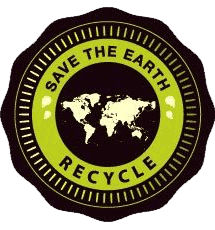So you’ve paid a waste management company to haul away your garbage. What do they do with it now? How do they safely, efficiently, and affordably dispose of your waste?

Waste management companies all work in slightly different ways. Different state regulations mean waste management varies widely from state to state.
In general, however, waste management companies will dispose of your trash in the safest, most efficient way possible according to local regulations.
There Are Three Different Waste Streams
Waste management companies will typically deliver your trash to three different waste streams, including:
-Recycle: Any recyclable materials follow this stream.
-Waste-to-Energy Facility: These facilities use extremely high-temperature furnaces to combust your trash, converting it into clean and renewable energy which is used to power local homes and businesses.
-Landfill: Any trash that cannot be recycled or converted to energy is brought to a local landfill. Landfills may be called “dumps”, but they’re high-tech facilities designed to isolate waste from the environment while minimizing damage to the surrounding area.
Obviously, the goal is to maximize the number of recyclables and waste-to-energy products while minimizing the amount of trash headed to the landfill.
Recyclables Trash
Your recyclable trash will be reduced and reused without heading to the landfill. Recyclables include all of the following:
-Paper: Paper recycles include corrugated boxes, old newsprint, mixed paper, and office mix (these are four distinct categories, and they’ll be separated after your dumpster is picked up). Paper recyclables are baled and sold mostly to paper mills.
-Plastics: Mixed plastic containers are sorted by type and color. Recycling facilities actually use blown air to separate heavy and light plastics from one another. These recyclables are optically scanned to see if they fit into different plastic categories (like HSPE) before being shipped to plastic plants.
-Glass: Glass recyclables are crushed into a new product called cullet. Cullet is then cleansed of debris and contaminants. Some facilities sort the glass by color before crushing. These recyclables are shipped to glass plants.
-Metals: Facilities typically use magnets to separate steel from the rest of the recycled metals. That steel is removed to a storage bin for baling, while other metals – like aluminum – are sent to places like aluminum plants. Metals are melted down, then reused.
Waste-to-Energy
Today, many environmentally-conscious countries and regions operate waste-to-energy facilities. Certain types of waste are brought to these facilities, then burned to release energy.
Waste management companies will deliver waste to the facility’s refuse pit. Then, the facility loads trash from the pit into its hoppers, then uses hydraulic rams to shove that trash into the boiler units. The boiler units use trash as fuel. The heat from the combustion of the trash converts waster in the boiler into steam, and that steam is sent to the utility infrastructure as a clean source of energy.
Landfills and Gas-to-Energy Systems
Most additional waste gets buried at a landfill.
However, some landfill waste gets turned into energy. Certain types of waste – especially organic waste – will produce methane gas and carbon dioxide as it decomposes. Eco-friendly landfills will recover this gas using a series of wells drilled into the landfill. This gas is fed through a piping system, then gets sent to power-generating equipment as a type of pressurized gas-based fuel.
The next time an Eagle Dumpster Rental truck drives off with your dumpster full of trash, you’ll know exactly where that trash is going to end up!
